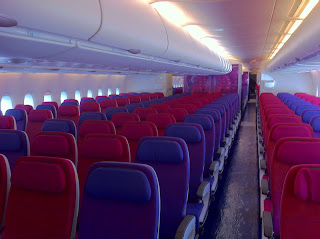I hope there's some more legroom than in their aircraft!
I have read that Barcelona-based airline Vueling has set up a joint-venture with Hoteles Catalonia in order to launch Vueling-themed hotels for its travelers. These hotels will be marketed under the "Vueling by HC" brand. The first hotel and test-bed for this concept will be launched in central Barcelona shortly and its design is going to be inspired in the fresh casual-looking style sported by the airline.
It is an interesting move, because, setting aside Easyhotel, which is part of the much broader Easygroup brand portfolio, airline hotels seemed to have fallen out of fashion in the last two decades...
It was not always like this, there was a time when every self-respecting flag carrier used to run its own hotel chain. In fact some of today's international hotel chains have been historically linked to airlines, this is the case of Swissotel (originally a joint-venture between Swissair and Nestlé), of Golden Tulip (linked to KLM), of Radisson (SAS), although most of these airlines withdrew from the hotel business at some point in the last decade, either forced by their financial situation or for strategic reasons.
Sabena was one of the airlines with the largest hotel networks, often providing the top accommodation options in the African capitals covered by its network. In this picture, the Memling Hotel, originally a Sabena hotel, in 1970s Kinshasa, in the Democratic Republic of Congo (called Zaire at the time)
By the way, Sabena's Kigali hotel became famous after becoming a refugee shelter during the Rwandan genocide, in the events that were later depicted in the film Hotel Rwanda.
If we look back a few decades, to the early days of commercial aviation, when international hotel brands where not as widespread as they are now it possibly made lots of sense to offer a complete package to your regular customers (mostly businessmen and affluent people in those times) that might wish to avoid being exposed to variable service standards depending on the destination.
As air travel becomes more commoditized it might make sense to go back the provision of comprehensive travel experiences though, and who best positioned that the airline, that is often the first gateway to travel bookings...I just hope that the size of rooms and beds is not proportional to the seat pitch on their aircraft!




















































